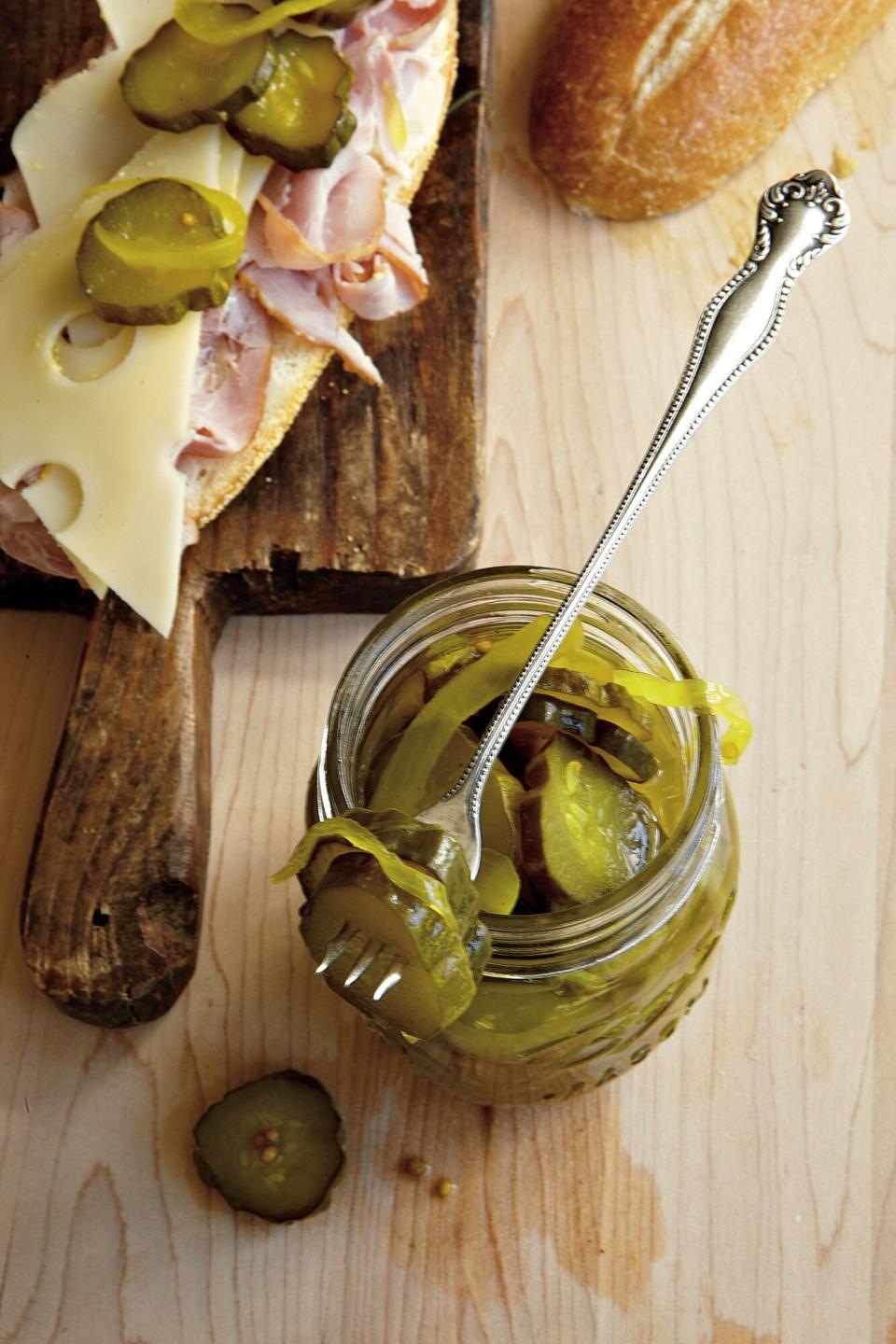How To Make the Best Bread-and-Butter Pickles
"I'll just plant two cucumber seedlings this season, that'll be all I need," you told yourself. You thought two little plants would give you just enough cucumbers to slice and dice into refreshing salads or blend into cool and creamy soups - just enough but not too much, right? Bless your heart. If your cucumber vines were anything like mine this summer, they quickly outgrew their assigned garden plots, crept along the fence lines, and wrapped themselves up and around the bird feeder posts, all the while producing more cucumbers than I could imagine ever using. So, what does every good gardener do when faced with too much produce? You make pickles, of course! My mom would make fantastic bread-and-butter pickles every summer and since I didn't have her recipe, I found one I thought was comparable. I bought new lids, pulled out my jars and water bath canner, and got busy. I am happy to say the results were fabulous and –25 pints later– I feel confident in sharing a few pointers I learned on how to make the best bread-and-butter pickles ever.

Southern Living
Select Crisp, Freshly Picked Cucumbers
Many picklers (those that pickle) prefer to use Kirby cucumbers. They have a thicker skin that can stand up to the pickling liquid and remain crunchy long after it's been preserved. I had planted the garden variety regular cucumber and they worked beautifully. If growing your own, don't let them get too big before harvesting or they will become bitter and have a dry texture. If buying cucumbers, skip the waxed cucumbers at the grocery store (the wax prevents the pickling liquid from penetrating the cucumber) and purchase fresh cucumbers from the farmers' market.
Use Pickling Salt
Whether you make quick refrigerator pickles or you can them, your recipe will direct you to "marinate" your sliced cucumbers and onions in salt for several hours. Regular table salt contains iodine and anti-caking agents that can darken pickles and cause cloudiness in your jars. Instead, use pickling salt - sometimes called canning salt or preserving salt — which is pure granulated salt (sodium chloride) and contains no additives. Pickling salt also has fine granules that make it easy to dissolve in a brine. Keep pickling salt in an airtight container away from moisture to prevent the salt from clumping.
Most bread-and-butter pickle recipes call for white vinegar with at least 5% acidity. Since white vinegar is a clear vinegar (made by distilling corn and rye) it will not alter the color of the pickles. Apple cider vinegar is a good choice for many pickles. It has a mellow, fruity flavor that blends well with spices. Cider vinegar may be substituted for white vinegar of the same acidity but, a word of caution: it will darken most fruits and vegetables.
How to Use Excess Pickling Liquid
If you have extra pickling liquid after filling your jars, pour it in a separate jar and rejoice! Here are five ways to use that delectable solution:
For brining onions, garlic, hard-boiled eggs, or any soft vegetable
2. For tenderizing meats ( pork, chicken, steak)
3. For livening up store-bought barbecue sauce
4. For adding a dash or two to macaroni and cheese and pimento cheese
5. For drinking. You have probably seen athletes drinking pickle juice on the sidelines to relieve cramps, right? After a day working outside in the sun, pickling liquid is a great pick-me-up and helps replenish potassium and sodium. Remember that bread-and-butter pickle liquid contains sugar so be mindful of how much you consume.

